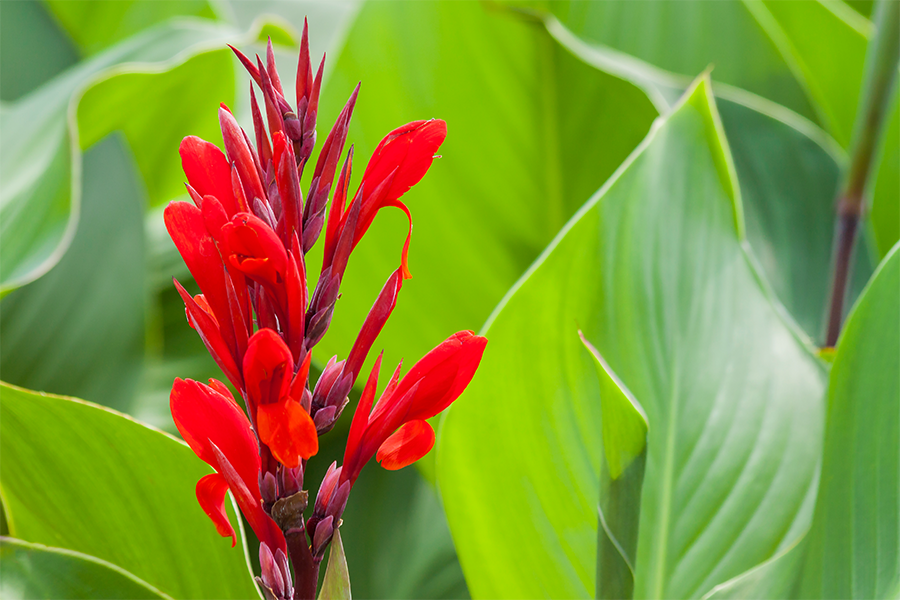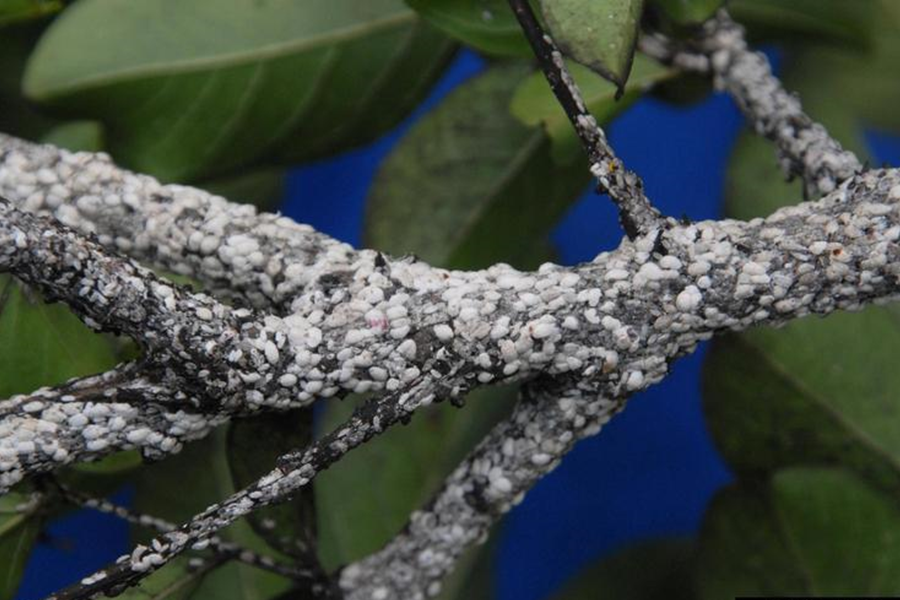Weeds, Diseases and Pests
-

An introduction to the larger canna leafroller, plus information on biology and management.
William Hudson and Shimat Joseph
|
-

The crape myrtle bark scale (CMBS) is an emerging threat to crape myrtle (Lagerstroemia spp.) in Georgia. As the name indicates, this scale pest attacks the bark of crape myrtle, the only known scale insect that infests crape myrtle bark. A native of Asia, CMBS was first confirmed in Dallas, Texas, in 2004. Since then, the pest has gradually expanded its range to the southeastern states. In Georgia, it was first confirmed in Coweta County in 2014. In 2019, CMBS were found infesting crape myrtles in an ornamental nursery in south Georgia. They can potentially spread in zones 6 to 9.
William Hudson and Shimat Joseph
|
-

2019 plant disease losses, including control costs, amounted to an estimated $832 million. The value of the cropsused in this estimate was approximately $6.64 billion, resulting in a 13.3% relative disease loss across all crops included in this summary. The estimated values for most crops used to compute these disease losses are summarized in the UGA Center for Agribusiness & Economic Development, 2019 Georgia Farm Gate Value Report (AR-20-01). Some estimates for fruits, ornamentals, and turf rely on the specialist’s knowledge of the industry and industry sources for information.
Elizabeth Little
|
-

Ryegrass threatens Georgia wheat production as herbicide resistance has become very problematic. Aggressive resistant management programs must be implemented; ignoring this warning will ensure resistance that threatens long-term sustainability of grain production.
Wild radish is the most problematic broadleaf weed infesting Georgia wheat. Wild radish seed pods often contaminate harvested grain, thereby reducing profits. Managing wild radish is not difficult if timely management decisions are implemented.
This publication provides commercial wheat producers with herbicide options and critical thinking points on controlling ryegrass and wild radish.
Stanley Culpepper
|
-

While most of us are familiar with common poisonous plants that cause
dermatitis (skin irritations) such as poison ivy or poison oak, we fail to
recognize common ornamental plants in the landscape that may cause internal
poisoning when ingested. Although most adults would not intentionally eat the leaves
or fruit of ornamental plants in the landscape, young children or pets sometimes do.
The purpose of this publication is to familiarize you with some of the common landscape
plants known to have poisonous properties when ingested. You may be surprised to learn just
how many of our common plants, such as azaleas, hydrangeas, boxwood and English ivy, are
known to have poisonous properties.Robert Westerfield
|
-

2018 plant disease losses, including control costs, amounted to an estimated $844 million. The value of the crops used in this estimate was approximately $6,268 million, resulting in a 13.5% relative disease loss across all crops included in this summary.
The estimated values for most crops used to compute these disease losses are summarized in the UGA Center for Agribusiness & Economic Development, 2018 Georgia Farm Gate Value Report (AR-19-01). Some estimates for fruits, ornamentals, and turf rely on specialist’s knowledge of the industry and industry sources for information.Jason Brock, Elizabeth Little, Phillip Brannen, Ganpati Jagdale, and Bhabesh Dutta
|
-

Stubby-root nematodes, Paratrichodorus minor, are considered an important pest of onions in Georgia. Low to high population densities of this nematode were observed in multiple fields in the Vidalia area causing damage to sweet onions. The most obvious aboveground symptoms of stubby-root nematode nematode infection are poor, stunted growth of onion seedlings. Stubby-root nematodes have a wide host range, including sugar beets, potatoes, corn, cotton, peanuts, wheat, onions, grasses and some other vegetable crops that are commonly grown in Georgia. Fallow crop rotation with non-host cover crops and treating seedbeds with suitable fumigant and non-fumigant nematicides are effective controls for this pest.
Christopher Tyson, Aubrey Shirley, and Abolfazl Hajihassani
|
-

Grazon® P+D (picloram + 2,4-D) injury, diagnosed as leaf roll, is occasionally observed in Georgia peanut fields due to the presence of contaminated soil, forage, animal waste (manure/urine), and/or irrigation water. Since peanut plants are very tolerant of low levels of 2,4-D, the primary cause of these leaf roll symptoms is picloram. When this injury occurs, growers are often concerned about how it can potentially influence final peanut yield.
Eric Prostko
|
-

Root-knot nematodes are highly adaptable, obligate plant parasites (parasites that cannot reach adulthood without a host) that attack plant roots and establish a prolonged relationship with their hosts. There are three common species of root-knot nematodes known to parasitize watermelon in the U.S.: the southern root-knot, M. incognita, the peanut root-knot, M. arenaria, and the Javanese root-knot, M. javanica. The southern root-knot nematode is ranked first in terms of negative impact on watermelon production, particularly in warm temperate climates. Many watermelon fields in Georgia are infested with one or more species of root-knot nematodes.
Josiah Marquez, Fereidoun Forghani, and Abolfazl Hajihassani
|